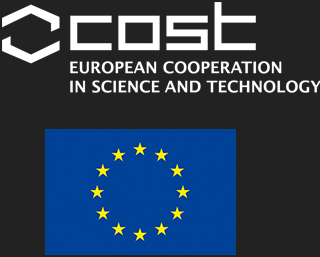About
ROSEnet CA15122 COST Action
Old-age exclusion involves interchanges between multi-level risk factors, processes and outcomes. Varying in form and degree across the older adult life course, its complexity, impact and prevalence is amplified by old-age vulnerabilities, accumulated disadvantage for some groups, and constrained opportunities to ameliorate exclusion. Old-age exclusion leads to inequities in choice and control, resources and relationships, and power and rights in key domains of life. Old-age exclusion implicates states, societies, communities and individuals.
ROSEnet is guided by five questions:
- What knowledge is available on old-age exclusion?
- What is the best conceptual approach for understanding old age exclusion?
- How is old-age exclusion constructed?
- What are the implications of old-age exclusion?
- How do we reduce old-age exclusion?
Research Justification
Scientific understanding of old-age exclusion as a multidimensional phenomenon is severely limited. There is a damaging lack of conceptual innovation on old-age exclusion. Only a handful of conceptual frameworks specifically consider exclusion in later life and often neglect theoretical explanations of why exclusion occurs in older age. Work on individual domains of exclusion (i.e. economic, social, service, civic rights, and community domains) is also underdeveloped, giving rise to significant knowledge gaps on these different areas of life. Research that has been completed lacks a critical perspective, and fails to explore interconnections between process and outcomes across the different forms of exclusion. There is as a result an underdeveloped scientific discourse on multi-dimensional old-age exclusion.
Societal Justification
Old-age exclusion is a direct and significant barrier to European Union (EU) goals, and World Health Organization (WHO) and United Nations (UN) recommendations on active and healthy ageing (EIP-AHA 2011; UN 2002; WHO, 2002). It undermines citizens’ ability to lead healthy, active and independent lives as they age, and to contribute in meaningful ways to European societies. Old-age exclusion has negative outcomes for European societies, affecting individuals, families, welfare and care system sustainability, and ultimately socio-economic stability. Old-age exclusion is, therefore, a major challenge for Europe today and into the future.
Policy Justification
There is an absence of a comprehensive conceptual framework to guide policy development on age-related disadvantage. Existing policy lacks relevance, exhibits low political prioritisation and fails to address the importance of jurisdictional contexts and the role of individual diversity and the lived experience. Critically, current policy debates also lacks awareness of the intersection between demographic ageing and social exclusion. Reducing the number of people at risk of exclusion by 20 million is a Europe 2020 strategy headline target (EC 2010). Extended lifespans, stagnating populations, and limited economic growth render this target difficult to achieve. This is particularly because older people alone will account for 17 million additional citizens, and 104 million people overall (20%), by 2020 in Europe (Eurostat 2012).
ROSEnet CA15122 COST Action
ROSEnet aims to overcome fragmentation and critical gaps in conceptual innovation on old-age exclusion across the life course, in order to address the research-policy disconnect and tackle social exclusion amongst older people in Europe. The action will engage researchers and policy stakeholders in creating shared understandings and directing the development of new policy and practice interventions that can be practically and effectively implemented, to reduce exclusion in diverse European ageing societies.
Why a COST Cross-National Collaboration is Critical
Old-age exclusion is relative. It is thus shaped by structural institutions, values, norms and policies of the context in which it occurs. It, therefore, can take on different meanings in different national settings and European regions. It might also be constructed in different ways, with different implications from one jurisdiction to the next. Utilising its pan-European membership and geographic coverage, ROSEnet will be in a unique position to unpack these relative elements of exclusion in later life.
Research Coordination Objectives
- Synthesise existing knowledge from regional, disciplinary and sectorally disparate dialogues, forming a coherent scientific discourse on old-age exclusion;
- Critically investigate the construction of life-course old-age exclusion across economic, social, service, civic rights, and community/spatial domains;
- Assess the implications of old-age exclusion across the life course within economic, social, service, civic rights, and community/spatial domains;
- Develop new conceptual and theoretical frameworks that can be practically applied in understanding and combating the exclusion of older people in European societies;
- Identify innovative, and implementable, policy and practice for reducing old-age exclusion amongst different groups of older people and in different jurisdictional and regional contexts.
Capacity-building Objectives
- Establish an innovative, interdisciplinary and participatory European collaboration, involving researchers, policy stakeholders and older people, to address the disconnect between research and policy on multi-dimensional old-age exclusion.
- Build cross-European interdisciplinary research capacity, enhancing early-career investigator development, and actively ensuring a gender balance across investigators to nurture and sustain the study of old-age exclusion and to create competitive advantage.
- Institute collaborative research relationships with COST neighbouring nations and international countries to strengthen Europe’s leadership role and establish the European Research Area as a hub of interdisciplinary excellence in innovation for the study of ageing and disadvantage.
- Drive a collaborative cross-European programme that cements the participation and leadership of COST Inclusiveness Target Countries in the study of old-age exclusion.


